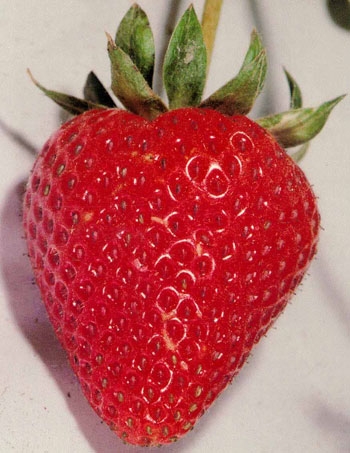
I had never participated in an eating meditation before. I wasn’t even sure what was involved. Did one eat and eat, and meditate at the same time with eyes closed? I had tried two other kinds of meditation before – sitting and walking meditations. A meditation focused on food intrigued me, and it was simple curiosity that motivated me to try it out.
The instructions, when they came, were simple: We could feel the strawberry, smell it, examine it closely, and, yes, eat it in micro-bites. What we had to ensure, however, was that this exercise was continuous, that we sat in place, and that we were still doing at least one of these activities at the end of a half hour. We could not gobble down the strawberry or ask for more. What would work best, if we were set on just the eating activity, was to nibble at it – preferably molecule by molecule. Needless to add, the focus of the silent meditation had to be the strawberry as far as possible, and nothing else.
The exercise was not easy. For the first few minutes some of us collapsed into giggles. Later, the exercise turned uncomfortable and awkward. But as the minutes dragged by at what seemed a glacial pace, the atmosphere in the room transformed, embracing a seriousness the meditation deserved. I remember letting piece after tiny piece of strawberry linger on my tongue until I had “exhausted” the taste of each. I also remember closely scrutinizing the texture of the fruit, letting my fingers caress the rough skin, feeling the pattern of what, to my surprise, turned out to be hexagons wrapping the fruit, and marveling over the berry’s geometry and symmetry.
Until that morning, I had not examined a strawberry with such concentration, such patience. I had paid little attention to the small seeds piercing the surface, and had only barely noticed how the red hue deepened from the flat top of the fruit to the conical peak. There were times when the strawberry felt heavy in my hand; at other times I had to gently squeeze the flesh to resurrect sensations and bring my mind back to the meditation.
After a while, so lost were we in the exercise that time seemed to cease and nothing in the world mattered more than the strawberry in hand. Indeed, the universe shrank – or had it expanded? – to just me, the strawberry and the meditation. Where I ended and the strawberry began was hard to say, and irrelevant.
After we emerged from the meditation, the recommendation we were offered was to do the exercise daily, starting with half an hour (we could increase the time with practice, if we wanted) and a food of one’s choice – anything small, such as a grape or a small candy. What was not said but unanimously understood was that this exercise could be an effective way to overcome excessive and mindless eating, the lesson being you didn’t need too much of a food you crave to enjoy it well.
To friends who tell me they wish to lose weight, I recommend the eating meditation. Even if it fails to reduce your weight, I inform them, the great benefit of the exercise is that you become mindful of what you eat, how much and for how long. To date, none of these friends told me they took on the challenge. Can I be surprised? Given how frequently food ads on TV, the print media, and elsewhere assail us, I cannot censure them. Sadly, here’s my confession: It has been many years now since I did this meditation.
For more information on mindful eating, read the February 2012 New York Time article Mindful Eating as Food for Thought.